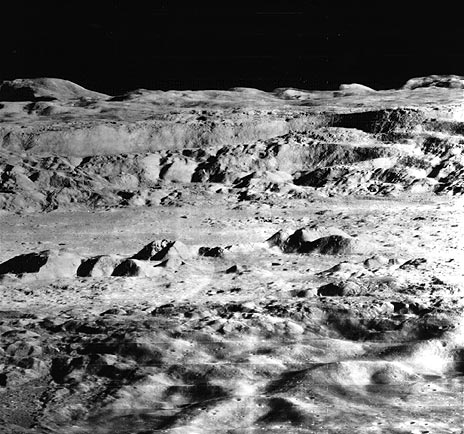Difference between revisions of "January 10, 2004"
| Line 43: | Line 43: | ||
<p align="center" class="main_titles"><b>Author & Editor:</b><br> | <p align="center" class="main_titles"><b>Author & Editor:</b><br> | ||
[mailto:tychocrater@yahoo.com Charles A. Wood]</p> | [mailto:tychocrater@yahoo.com Charles A. Wood]</p> | ||
| − | < | + | <!-- Cleanup of credits --> |
| − | + | <!-- Cleanup of credits --> | |
| − | < | + | <!-- Cleanup of credits --> |
| − | + | <!-- Cleanup of credits --> | |
| − | < | + | <!-- Cleanup of credits --> |
| − | + | <!-- Cleanup of credits --> | |
| + | <!-- Cleanup of credits --> | ||
<p> </p> | <p> </p> | ||
<!-- End of content --> | <!-- End of content --> | ||
{{wiki/ArticleFooter}} | {{wiki/ArticleFooter}} | ||
Latest revision as of 10:12, 6 June 2015
Photo of the Century
|
|
|
Photo of the Century Thirty-eight years ago, near the beginning of the Space Age, Lunar Orbiter II snapped this low oblique photo of the inside of Copernicus crater, and the press labeled it the Photo of the Century. This view from above one rim, looks 93 km across the crater's floor and peaks, up the terraced far wall, to profiles of the Carpathian Mountains. Clearly the sheer scarp of the first terrace will be a great obstacle for future astronauts wanting to enter or leave the crater! And the middle central peak seems to be breeched - its cut open from summit to floor. This looks very much like a volcanic cinder cone on Earth that has had part of its wall carried away by a lava flow. But we don't see such a flow in Copernicus. What we do see - or rather multi-wavelength images show - is that these peaks are olivine-rich rocks from 8-10 km depth that were thrust up into the lunar sky by a rebound to the impact that excavated the crater. Related Links:
Yesterday's LPOD: Posidonius: Rilles and Uplift Tomorrow's LPOD: Straight Wall |
Author & Editor:
Charles A. Wood
COMMENTS?
Register, Log in, and join in the comments.




